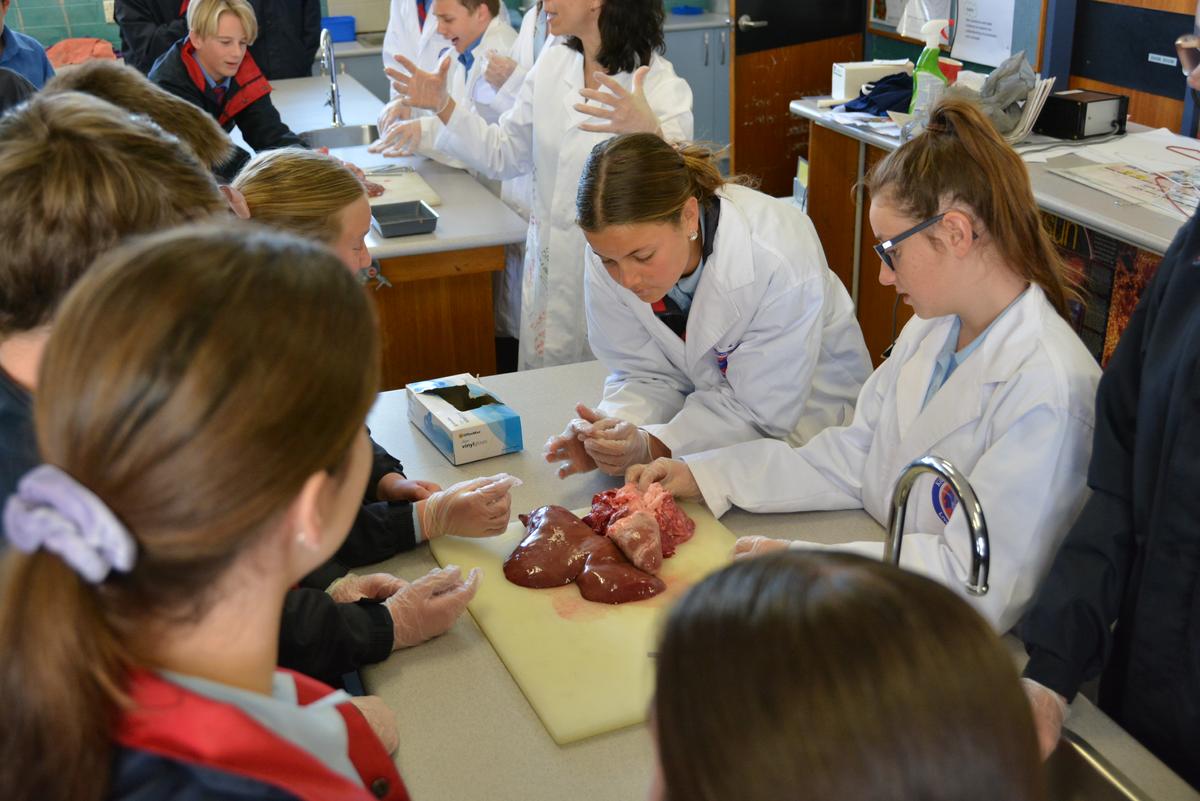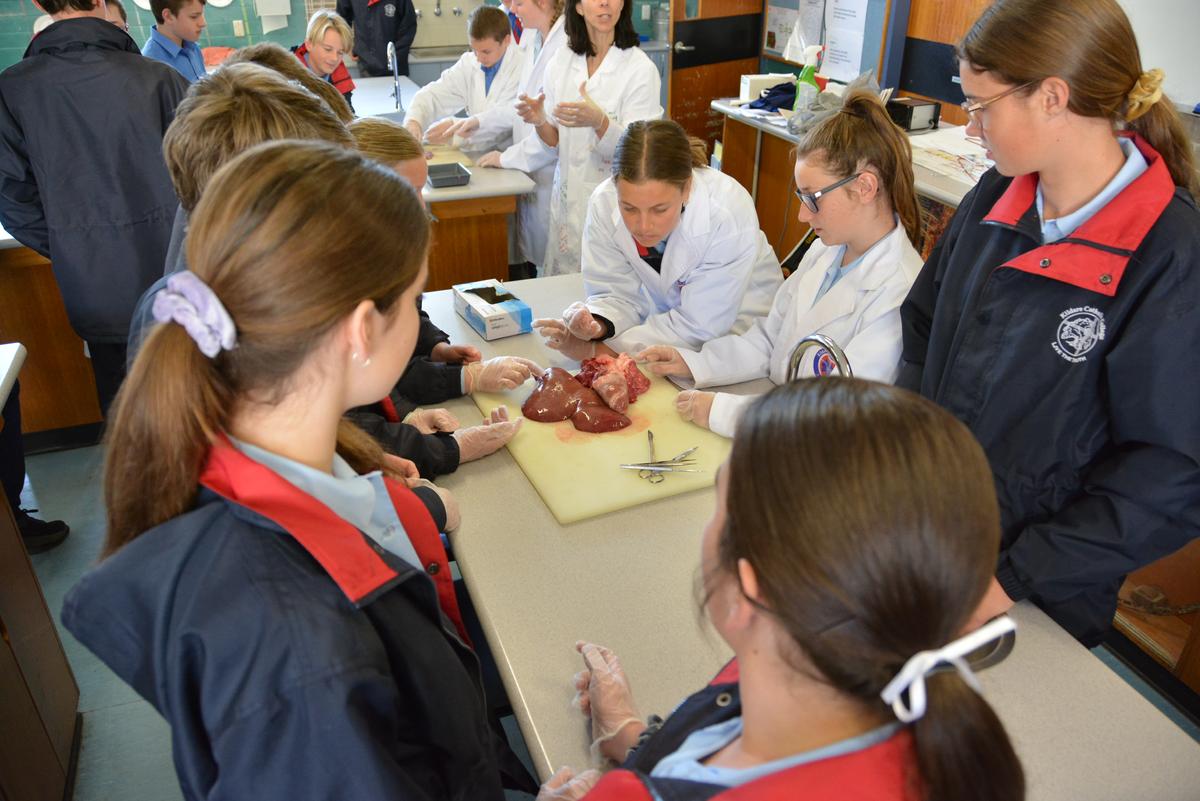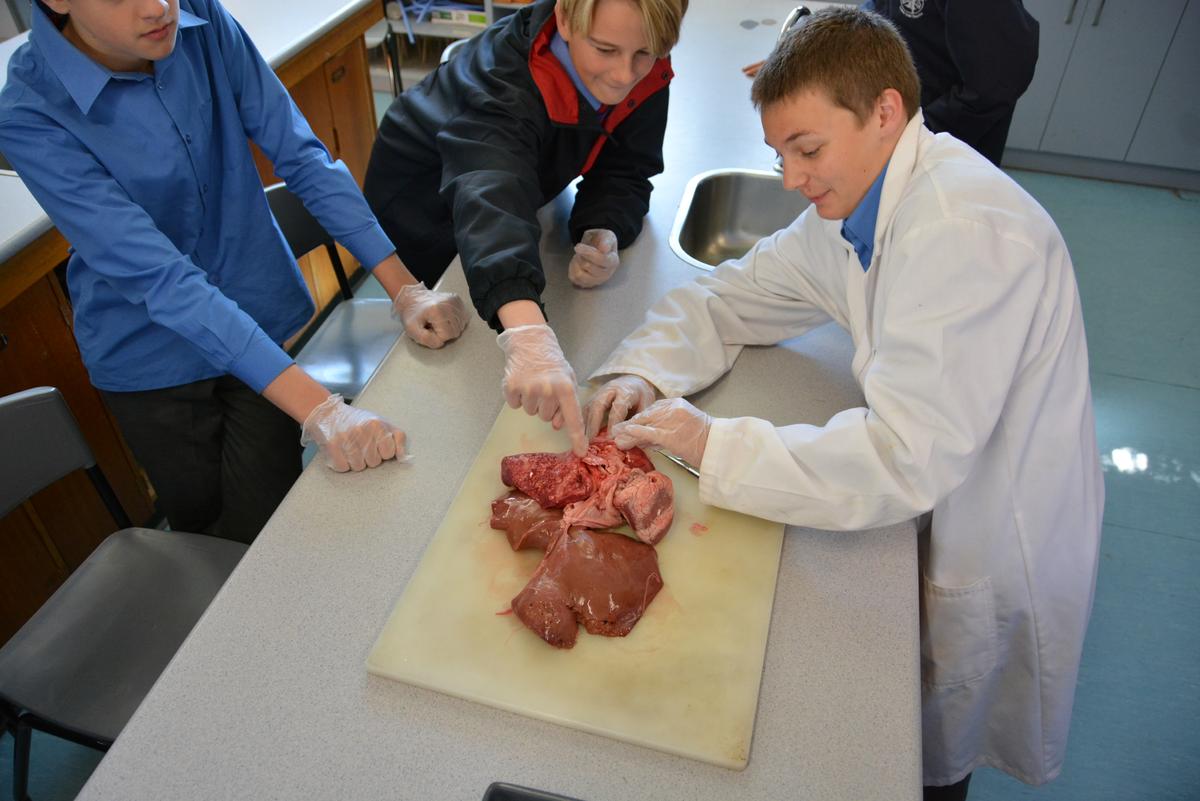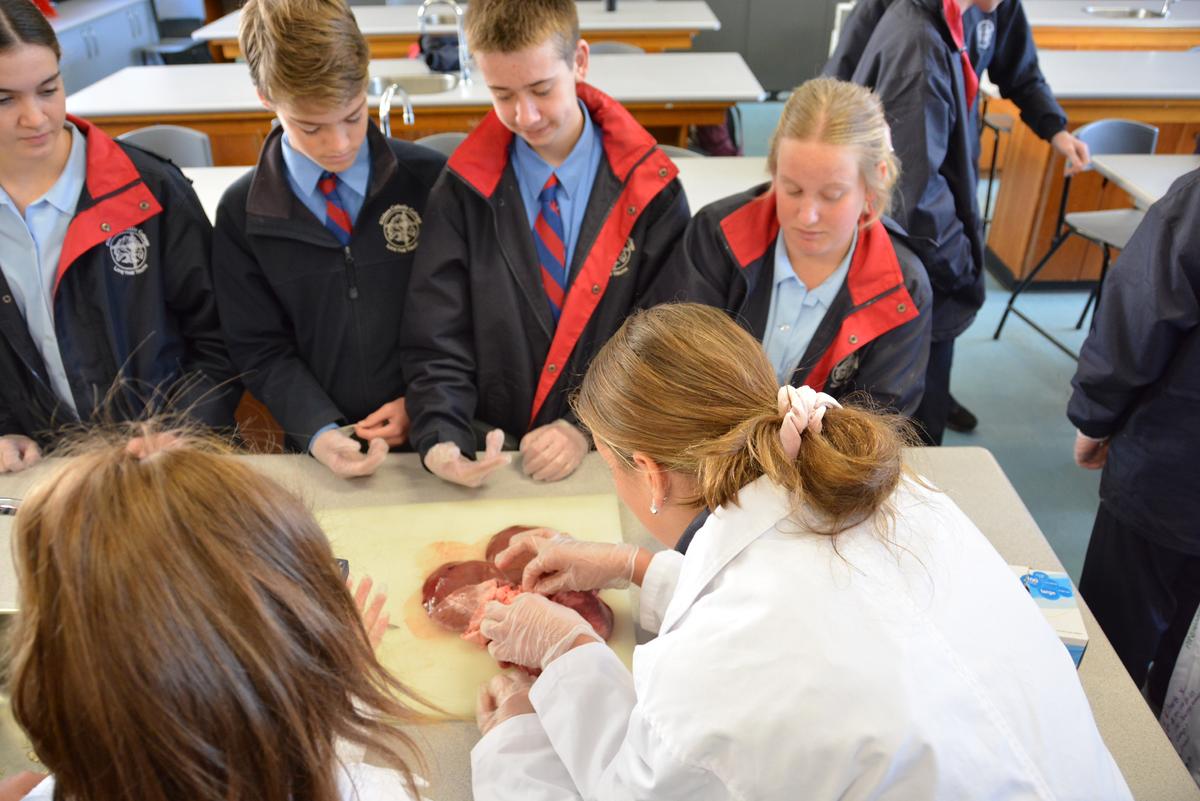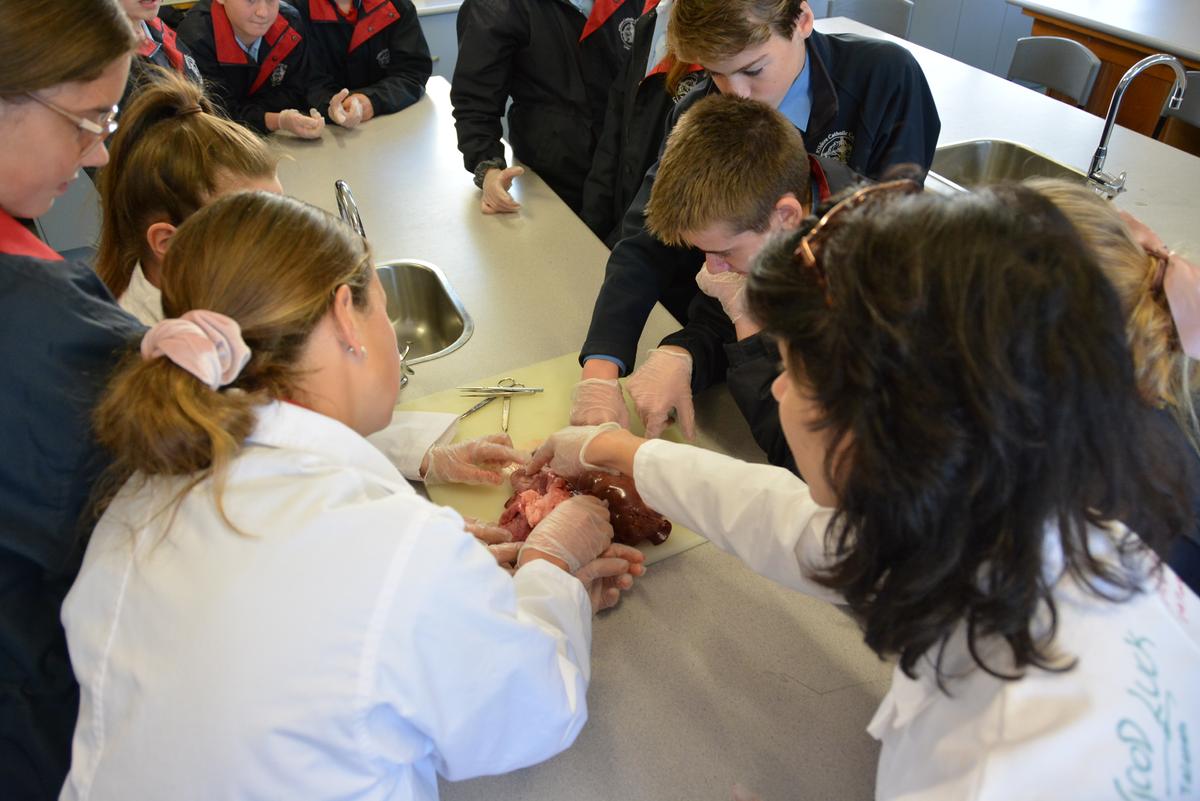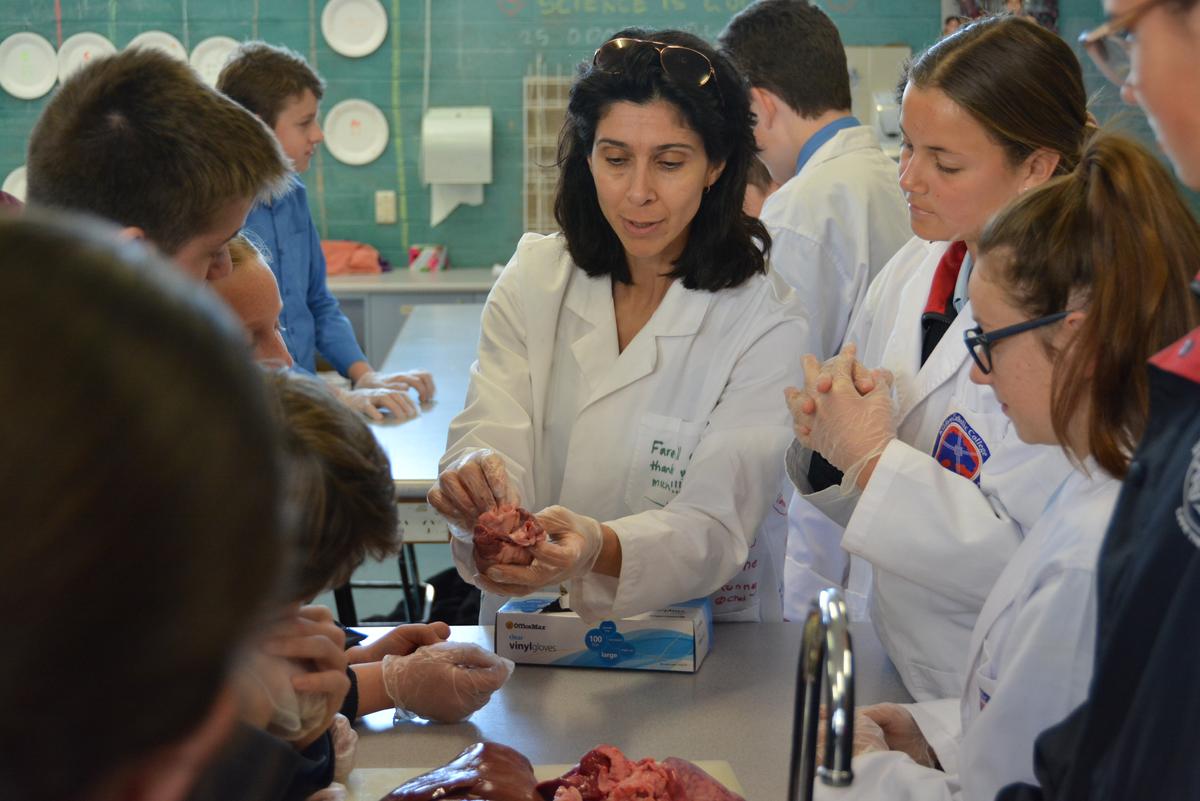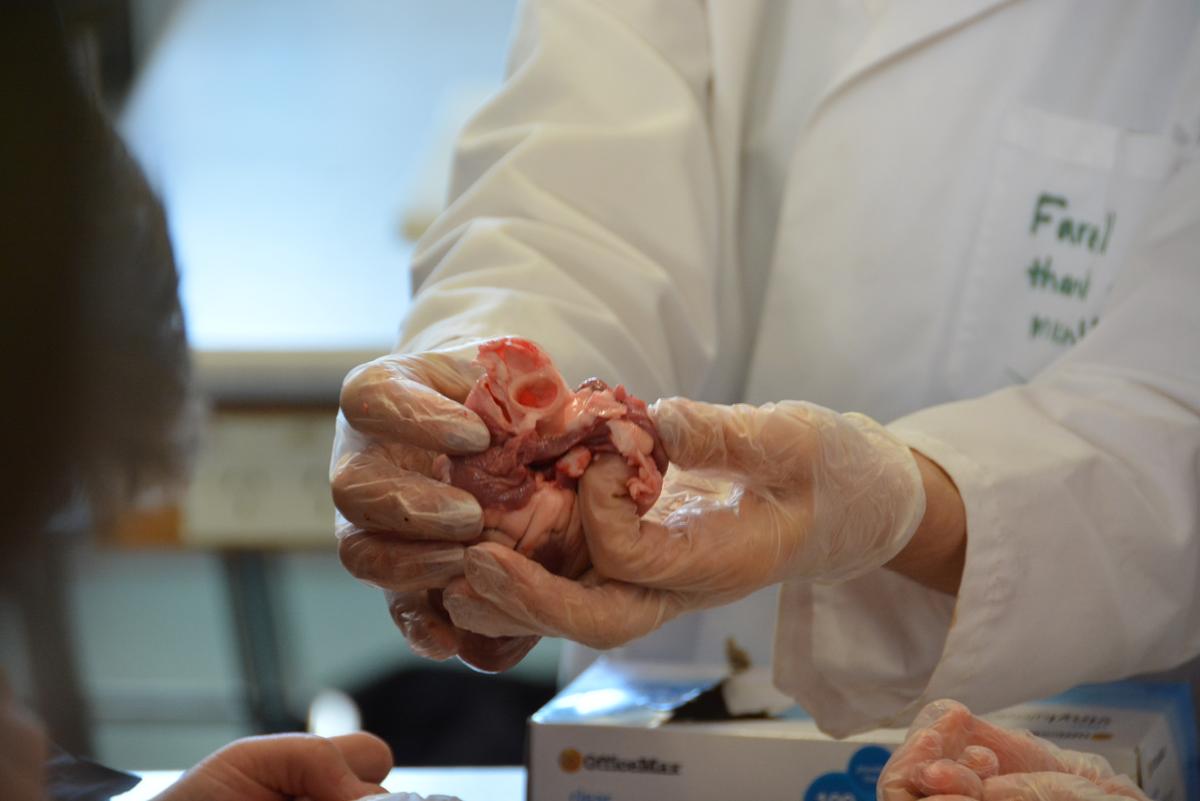Science Dissections
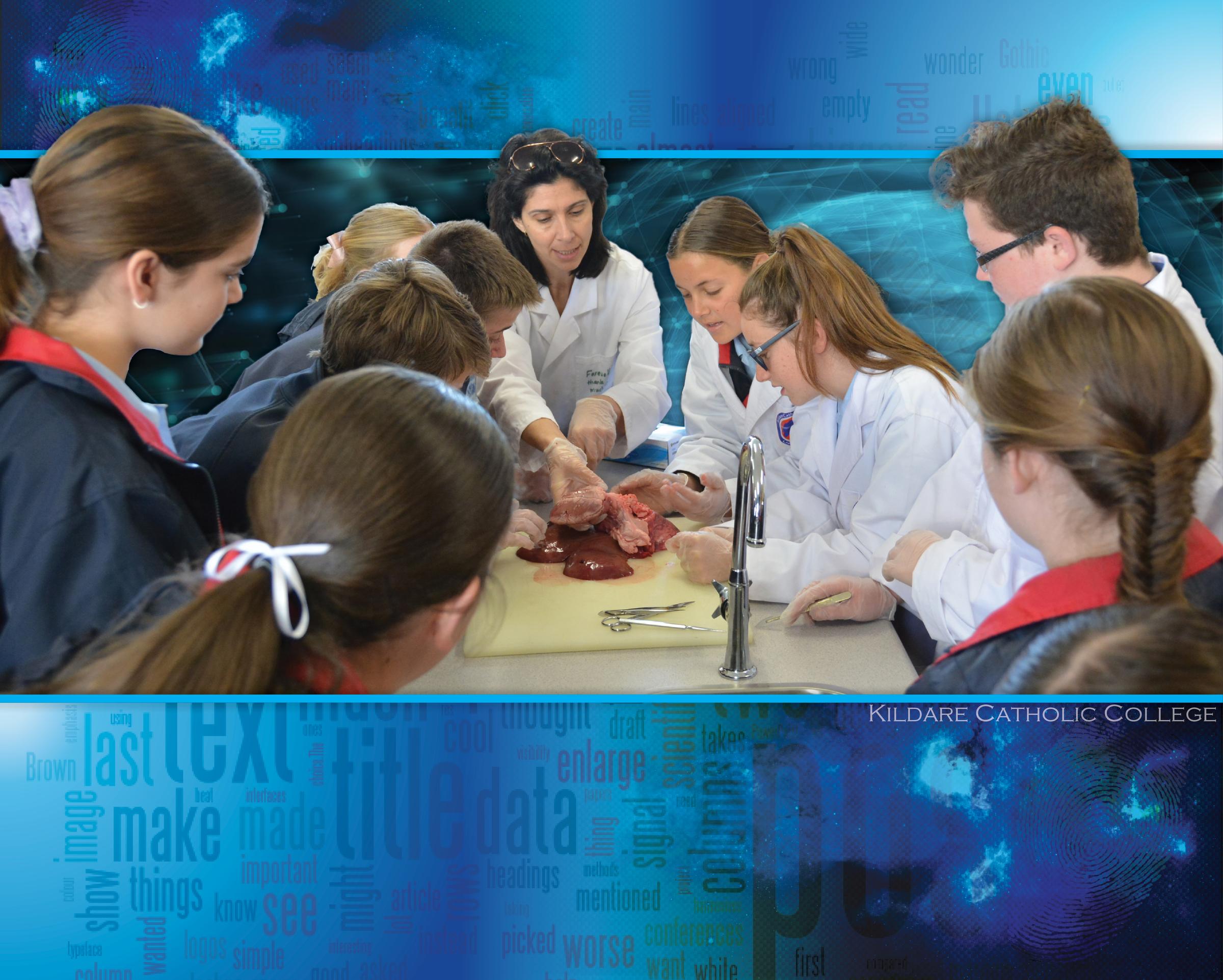
There have been several biology topics running in junior science at the moment which have focused on body systems. This has allowed for students to partake in dissections.
A pluck dissection involves investigating the lungs, liver, heart, trachea and sometimes the diaphragm. It facilitates students' greater understanding of the structure of organs and then relate it to their function in keeping us alive.
For example, the students were able to physically identify that the lungs are spongy and can expand. They then made the connection that this is because they need to inflate when breathing in and deflate when exhaling.
They were then able to compare and contrast this to the structure of the heart which is muscular and quite dense. Through this discovery, it was easier to see that a large amount of muscle is needed to pump all of our blood around the body; from the tips of our toes to the top of our head.
It was a wonderful opportunity to be part of and provided for rich learning experiences. As is the case in biology, these practicals enabled an increase in awe and wonder regarding the intricacies of life.
Jennifer Stephens | Assistant Science Coordinator

